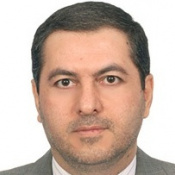
سید حسین میرجلیلی
| مدرک تحصیلی: دکتری علوم اقتصادی، دانشگاه امام صادق، تهران، ایران |
| رتبه علمی: استاد اقتصاد پژوهشگاه علوم انسانی و مطالعات فرهنگی |
| پست الکترونیکی: seyedhossein.mirjalili@gmail.com |
| وب سایت شخصی: http://hosein.mirjalili.com |
مطالب
How to Escape the Middle Income Trap in Iran? Lessons from Malaysia, Thailand South Korea and China(مقاله علمی وزارت علوم)
کلید واژه ها: middle income trap economic growth Productivity Human capital Education
Climate Change and Crop Yields in Iran and Other OIC Countries(مقاله علمی وزارت علوم)
کلید واژه ها: climate change Agricultural productivity OIC countries Temperature Precipitation Employment
ارزیابی نظری رویکرد ساختارگرایی جدید در اقتصاد توسعه: مزایا و چالش ها(مقاله علمی وزارت علوم)
Development Plans, Economic Indicators and Planning Challenges in Iran (1979-2022)(مقاله علمی وزارت علوم)
Inflow and outflow of oil revenues: Scenarios for National Development Fund of Iran(مقاله علمی وزارت علوم)
نخستین مکتب های اقتصادی(مقاله علمی وزارت علوم)
کلید واژه ها: اندیشه اقتصادی مکتب اقتصادی سالامانکا مرکانتی لیسم فیزیوکراسی
اقتصاد نئوکلاسیک
مکتب کینزی جدید
آشنایی با مکاتب اقتصادی: مکتب حاکمیت طبیعت فیزیوکراسی
تجدید حیات کلاسیک ها در اقتصاد: مروری بر مکتب ها(مقاله علمی وزارت علوم)
کلید واژه ها: کلاسیک ها مکتب اقتصادی بانکداری آزاد اصالت فایده کلاسیک جدید نئوریکاردویی
آشنایی با مکاتب اقتصادی, مکتب کلاسیک
آشنایی با مکاتب اقتصادی مکتب بانکداری ، مکتب پول (در گردش) و مکتب بانکداری آزادگ
اندیشه های اقتصادی ابن خلدون؛ ارزیابی انتقادی چهار ادعا(مقاله علمی وزارت علوم)
کلید واژه ها: اندیشه اقتصادی ابن خلدون اقتصاد اسلامی اقتصاد اسکولاستیک مکتب سالامانکا ماتریالیسم تاریخی